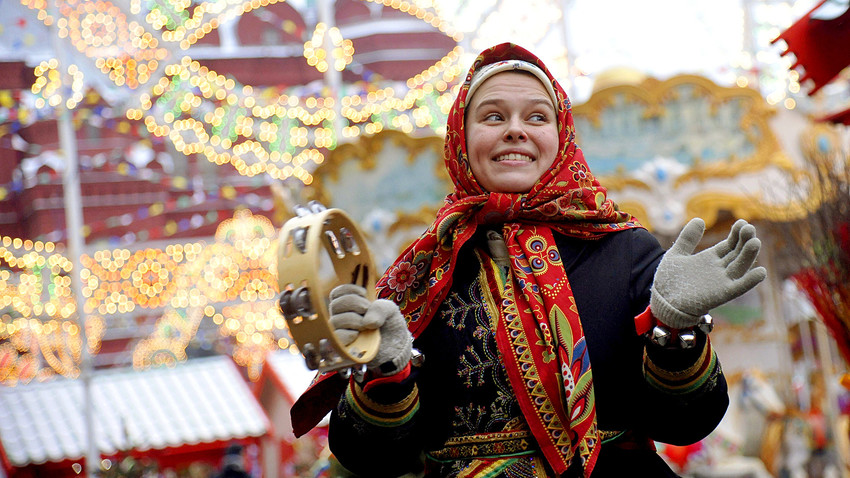
“There were specific rituals for a groom and bride in a Slavic wedding to check the compatibility of young people and their ability to feel and understand each other,” explains Sergey Efimychev, who has organized dozens of traditional Slavic parties with up to 450 guests.
For example, there is a ritual to help your partner overcome obstacles. The groom walks around holding one end of a rope, and the bride, with eyes closed, must follow holding the other end. Meanwhile, the guests put obstacles in her way, by imitating trees and bushes, in the forest. The groom warns his bride how to avoid the obstacles. Then they change roles.
“In Slavic tradition, if the couple didn’t pass at least seven such tasks, they would not marry, nowadays it is not like that, but some rituals are still used,” Sergey says.
Guys can put on shirts and trousers made from natural fabrics. Both men and women should use belts. In Slavic beliefs, they have a sacred meaning as a protection against evil.
Slavic celebrations are usually held outdoors in the tradition of being in harmony with nature. You also need a lot of space for dances and games, so you have to be prepared for all weather conditions.
Sergey Efimychev suggests starting the party with a “warm-up”: fun active games make people laugh. “That will ‘break the ice’ and make people feel more comfortable and relaxed,” he says.
One of the games is called Zateynik (the Entertainer). One person is chosen, the leader, who then closes his eyes, and is surrounded by the other participants in a circle. The people in the ring select one to be the
“The party goes on with active games and competitions to create a team spirit, where one should use attention, intuition, flexibility, and strength” explains Sergey Efimychev.
In another game: One person is surrounded in a circle by the other participants. Two of the people making up the ring should wink at each other, so the person in the middle doesn’t notice. When one catches the other’s eye, they must run to exchange places. It’s then up to the person in the middle to occupy one of the empty spots. If he succeeds, the person left with no place to stand remains in the center of the circle, and the game repeats.
One of the typical dances is the so-called “city’s quadrille.” Men and women should face each other in a line about two meters apart. When the music starts the men together, take three steps toward the women, and on the fourth step, they stomp loudly saying “Ух!” (Ukh!). Then they make three steps backward. The women repeat the same saying “Эх!” (Ekh!). After that, the first man and woman in line hold hands wide apart and leap along the corridor between the two lines and stand at the far end. The people who are now first in line repeat the dance.
The primary goal of Slavic parties is to involve everybody in all the games and dances. In an atmosphere of freedom and joy, people start feeling better and open up in a new way. “I saw people who were very shy when they arrived at the party and how they changed afterward. They started smiling and became more brave and trusting. And they were very grateful to the organizers,” says Sergey Efimychev.
According to Sergey, Slavic celebrations help to wake up your “inner child,” as you will smile more, and be full of positive emotions and energy and more open to the world.
If you are going to arrange an openair party, read our recipes for 7 refreshing drinks from the Ancient Slavic fresh bar.
If using any of Russia Beyond's content, partly or in full, always provide an active hyperlink to the original material.
Subscribe
to our newsletter!
Get the week's best stories straight to your inbox